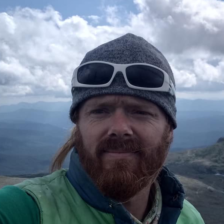Project description:
My research in rotating hydrodynamics builds off of work I conducted as a postdoctoral researcher at the Princeton Plasma Physics Laboratory. That work culminated in two papers, one on the nonlinear stability of strongly perturbed rotating flows and the other on the Reynolds number scaling of flows and a theoretical interpretation based on boundary layer scaling. These works addressed some long-standing questions of dispute in the field, and opened up new topics for research. My work at SUNY Cortland continues with these studies and will address three main questions:
1. What is the role of the vertical propagation of turbulence in accretion disks?
A new Taylor-Couette device has been constructed at SUNY Cortland over the summer of 2020. This device will serve as a proof of principle for demonstrating the vertical propagation of turbulence, a situation that may be present in accretion discs due to surface ionization. Experiments in this test device will be used to establish initial results in pursuit of additional funding. Financial support from the National Science Foundation and the US Department of Energy will be sought in support of a more sophisticated experimental apparatus and additional diagnostic tools.
2. Given what is now known of boundary layers, what mechanical design affords the best simulation of astrophysical flows?
In looking toward further studies of astrophysical flows at larger Reynolds numbers, a larger device, higher speed device will be needed. Given what we learned of these devices from my studies, along with other previous studies, we can now use these ideas to build a device that is optimized to reduce secondary flows.
3. By implementing prescribed boundary flux models for the interaction of the fluid with the solid boundaries, can we extend the range of Reynolds numbers in simulations to allow us to make better connection with experiments?
Numerical simulations are often limited in their ability to reach large Reynolds numbers by the need to either run with large viscosity (or low speed), or require very large computing resources. However, much of the difficulty in simulating higher Reynolds number flows arises because the boundary layers get smaller with increasing speed, thereby requiring a reduction in both spatial and temporal simulation scales. However, by modeling the boundary layers with a prescribed boundary layer model that is derived from experimental observations, as was suggested in my 2015 PRE paper, we could bypass the need for very small spatial scales and allow simulations to achieve a significant enhancement in Reynolds number for a moderate increase in computing resources.
Publications:
1. Reynolds number scaling and boundary layers in quasi-Keplerian flows
2. Nonlinear stability of laboratory quasi-Keplerian flows
Student Research:
Summer 2011, Princeton Plasma Physics Laboratory
Student: Michael Pretko
Project: Theoretical analysis of surface waves in rotating flows
**Presented at the 2011 APS DFD Conference in Baltimore, MD
Summer 2010, Princeton Plasma Physics Laboratory
Student: Zoe Yan
Project: Measurement of the vortex lifetime in rotating flows
Fall 2009, Princeton Plasma Physics Laboratory
Student: Peter Humanik
Project: Development of a line-laser scanner for measurement of surface waves in rotating flows
Related Developments:
Patent for an advanced centrifuge
